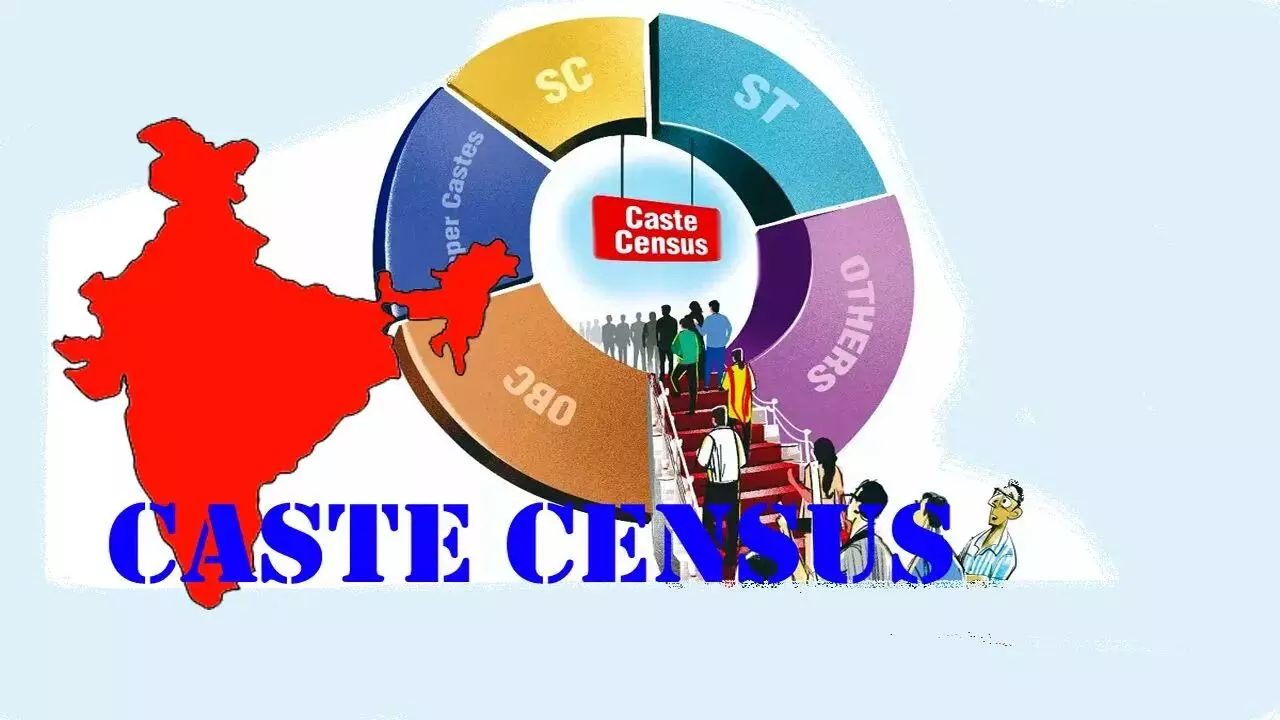Caste Census: A Compulsion, Not Conviction – BJP’s Strategic Shift or Social Awakening!

After nearly a decade of resistance and political silence, the Government of India has finally agreed to conduct a nationwide caste census. This monumental shift didn’t happen overnight—it came after relentless pressure from the opposition, led prominently by Rahul Gandhi, the RJD, and Samajwadi Party. For years, the caste census remained a forgotten chapter, with no enumeration carried out since 2011. The BJP-led central government had long brushed it aside, often labelling it as a divisive political tool. Even Prime Minister Narendra Modi, once a vocal opponent, had argued that such an exercise was a tactic by Congress to appease “urban Naxals” and divide the country. But now, the tone has softened, the posture has changed, and the policy has pivoted. Why?
This change of heart cannot be detached from political compulsions and electoral realities. The opposition’s caste-based narrative during the 2024 general elections, particularly the INDIA alliance’s focus on the “jitni abaadi utna haq” slogan (rights proportional to population), gained traction across backward communities. Although BJP retained power, it witnessed unexpected setbacks in regions like Uttar Pradesh and Bihar—regions where backward classes and Dalits are electorally significant. As per the Mandal Commission and NSSO data, OBCs form around 52% of India’s population, while Scheduled Castes (SCs) constitute about 16.6% and Scheduled Tribes (STs) around 8.6%. That means nearly three-fourths of India’s population belongs to backward and marginalized communities, and ignoring them is no longer an option.
India ranks 129th out of 191 countries on the Human Development Index (2021), and in terms of social equality, the World Inequality Report 2022 highlights stark economic disparities: the bottom 50% of Indians own just 6% of total national wealth, while the top 10% hold more than 77%. Within these deprived groups, Dalits and OBCs disproportionately bear the burden of poverty, unemployment, and lack of access to quality education. According to the National Crime Records Bureau (NCRB), crimes against Dalits increased by 17% from 2018 to 2021, with BJP-ruled states like UP, MP, and Rajasthan accounting for the highest numbers. How can social justice be delivered when atrocities persist, when access to basic amenities remains elusive, and when representation in policymaking is skewed?
The Supreme Court has, over the years, affirmed the role of data in delivering justice. In Indra Sawhney v. Union of India (1992), the Court upheld the 27% reservation for OBCs but emphasized the need for periodic review and accurate data. In Subhash Chandra & Ors. v. Delhi Subordinate Services Selection Board (2009), the Court reiterated that “identification of backwardness must be based on empirical data.” The lack of caste-based data has been a roadblock in rationalizing affirmative action. So, when BJP now terms caste census as “essential for social justice,” is it also accepting that justice has long been delayed or denied?
Interestingly, the RSS, the ideological anchor of the BJP, has remained unusually neutral on this matter. Known for advocating a unified Hindu identity over caste divisions, RSS’s silence hints at internal contradictions. Could this indicate a waning influence of the upper-caste ideological core over BJP’s electoral strategies? Or is it simply a tactical silence to avoid fracturing its own support base? Leaders like Chirag Paswan and Nitish Kumar have expressed dissatisfaction, especially amid recent controversies like the Waqf Bill vote, which saw NDA allies siding with BJP despite internal discord. As BJP leans more on backward-class support to consolidate power, regional allies are asserting themselves, knowing well that their survival hinges on caste politics.
The turning point came in Bihar under the Mahagathbandhan government, when Nitish Kumar, defying the Centre, conducted a state-level caste-based survey. The results, made public, revealed significant gaps between population and resource distribution. The same demand was echoed by Akhilesh Yadav in Uttar Pradesh but was dismissed by the Yogi Adityanath government. However, the growing public discourse forced BJP to rethink its stance. The 2024 election outcome further rattled the saffron party’s overconfidence, especially as caste-based mobilization clearly played a role in their electoral setbacks.
Moreover, the recent terror attack in Pahalgam and the apparent lapses in security have added to public frustration. In such an atmosphere, with mounting social unrest and economic disparity, announcing a caste census seems less a policy decision and more a damage-control tactic. The BJP is now balancing between electoral arithmetic and ideological consistency.
Ultimately, the caste census is not just a demographic exercise—it’s a mirror. It reflects the structural inequalities that still plague India 75 years after Independence. It demands policy recalibration, fiscal justice, and social inclusion. Whether BJP’s move is a strategic shift for electoral gain or a genuine course correction remains to be seen. But one thing is certain: in the battle between politics and justice, the people are watching—and this time, they are counting.
